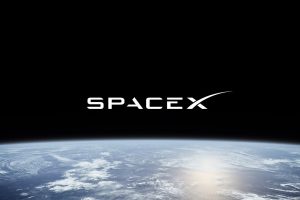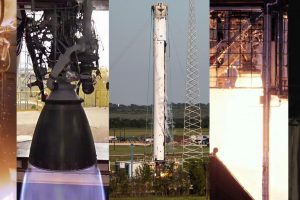SpaceX appears to be making great progress towards the start of its first full Super Heavy static fire campaign, building upon extensive Starship testing and a single booster static fire completed in July 2021.
On May 14th, upgraded Super Heavy booster B7 was moved back to SpaceX’s South Texas Starbase Starship factory after completing a successful round of tests and smoothing out an otherwise rocky start to its life. It was not the booster’s first time on that journey: after first leaving the Starbase ‘nest’ on March 31st, Booster 7 suffered significant internal damage during a structural stress test on April 14th and was forced to return to the factory for repairs. Impressively, despite the cramped environment and extremely limited access to the interior of the Super Heavy’s primary and secondary propellant tanks, SpaceX engineers and technicians somehow completed those repairs and Booster 7 sailed through a new round of ‘cryoproof’ testing on May 9th and 11th.
In the ~20 days since its second return, SpaceX teams have been hard at work preparing Super Heavy B7 for its next major challenges – the results of which could determine whether the massive rocket helps launch a Starship into space later this year.
That goal, same as it has been for half a year, is to qualify the first Super Heavy booster for flight. To do so, SpaceX must – at long last – static fire a Super Heavy with all necessary Raptor engines installed. For Booster 7 and its near-term successors, that means 33 new “Raptor 2” engines capable of generating a total of ~7600 metric tons (~16.7M lbf) of thrust.
That’s exactly what SpaceX workers have been focused on doing since Booster 7’s second return to a Starbase assembly bay. Bit by bit, they have spent every day since installing Raptor 2 engines one at a time. Unfortunately, due to the Super Heavy’s relocation inside a brand new assembly building known as the Megabay, High Bay 2, or Wide Bay, the half-dozen or so unaffiliated photographers who have come to regularly photograph Starbase have yet to find an angle that shows the state of that engine installation progress.
Two weeks later, it’s clear that SpaceX is taking its time, which likely also implies that the company is simultaneously encasing Booster 7’s Raptors and engine section in shrouds that will protect them during static fire testing; as well as during launch, reentry, and landing if B7 makes it that far. That’s not guaranteed, however, and it could also simply be that installing 33 engines on the first attempt at installing any Raptor 2s on any rocket has proven much harder than expected.
On June 1st, CEO Elon Musk appeared to confirm that engines are still being installed on Super Heavy B7, but he also verified that “all Raptor 2 engines needed for [the] first orbital flight are complete.” That could include Starship S24, which needs three sea-level Raptor 2s and three vacuum-optimized Raptor 2s, but it’s still great news even if he only means it for Booster 7. SpaceX has been spotted delivering at least a handful of new Raptor 2 engines a week for the last month or two, which means that all 33 engines may already be onsite at Starbase. If some are still undergoing proof testing at SpaceX’s McGregor, Texas facilities, it could be a few more weeks before all necessary engines are onsite, but that milestone is likely close at hand if it hasn’t already been reached.
For Super Heavy Booster 4, which was inexplicably never static-fired, installation of all 29 of its Raptor 1 engines took just a few days, but the installation of a heat shield around those engines took at least a few weeks. On June 1st, SpaceX also began installing grid fins on Super Heavy B7, further indicating the company’s growing confidence in the booster.
Outside of booster outfitting, SpaceX has also been aggressively refilling the Starbase orbital launch site’s (OLS) massive tank farm, which is capable of storing, subcooling, and distributing thousands of tons of liquid oxygen (LOx), liquid methane (LCH4), liquid nitrogen (LN2), and a variety of gases. For a full wet dress rehearsal (WDR), which has also never been done with Super Heavy, SpaceX would need to fill the booster with around 3400 tons (7.5M lb) of propellant. Out of an abundance of caution, Super Heavy B7 will likely have far less propellant aboard during almost all of its static fire tests, but a full static fire with a full load of propellant – simulating most prelaunch conditions – will likely be one of the last main goals of any static fire campaign. At full thrust, 33 Raptor 2 engines will likely burn around 25 tons (~55,000 lb) of propellant per second, so a huge amount of propellant will be needed regardless.
In the same series of June 1st tweets, Musk also confirmed that SpaceX intends to proceed cautiously into its first true Super Heavy static fire campaign, testing engines “just one at a time at first.” Musk probably isn’t being literal, as a campaign in which Booster 7 tested every one of its 33 Raptors individually could easily take weeks, so it’s likely safe to interpret his words to mean that SpaceX is not going to leap straight from the first limited test of one or a few engines to all 13 center engines, all 20 outer ‘boost’ engines, or all 33 engines at once.
Almost three weeks into the process of engine and heat shield installation, Booster 7 could potentially be ready to return to the orbital launch site any day now, though there’s probably an equal chance that it’s still a few weeks away. Nonetheless, SpaceX is on the cusp of kicking off one of the most exciting and important test campaigns in the history of Starship.





